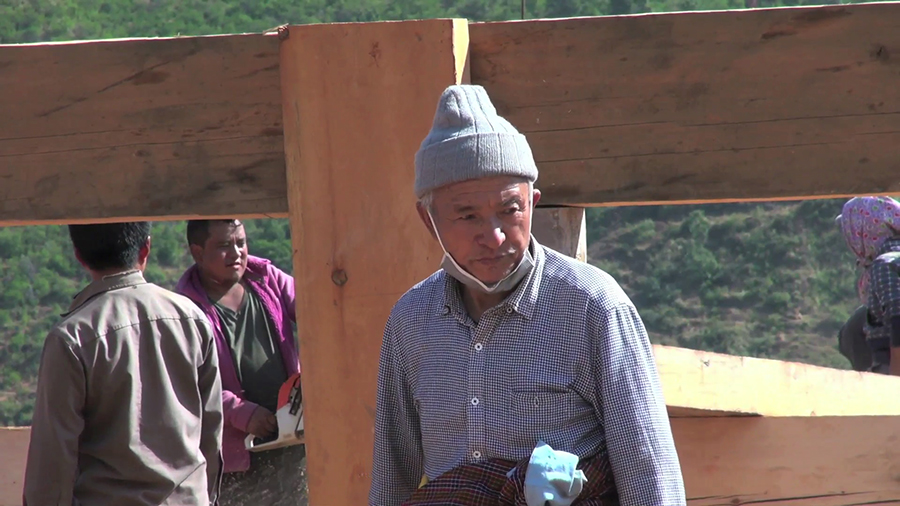 Bhutan is rich in architectural design. There are even a set of rules for the designs. We know a lot of our massive dzongs and monasteries. They are one of the country’s main attractions. But we barely remember the hands that build them. However, 71-year-old Dorji from Bjena Gewog in Wangdue Phodrang is somebody to remember. He is a man whose hands can turn a piece of rock and wood into a mastery piece of art – even to something priceless.
Bhutan is rich in architectural design. There are even a set of rules for the designs. We know a lot of our massive dzongs and monasteries. They are one of the country’s main attractions. But we barely remember the hands that build them. However, 71-year-old Dorji from Bjena Gewog in Wangdue Phodrang is somebody to remember. He is a man whose hands can turn a piece of rock and wood into a mastery piece of art – even to something priceless.
The head carpenter of Wangdue Phodrang Dzong reconstruction today, Dorji began carpentry work when he was barely 18. He has been a head carpenter for the last more than three decades.
He barely knows alphabets and to even hold a pencil, his hands would disapprove, but from what he does with wood, it is as though he talks to them and they automatically form their own shape.
According to Dorji, if an educated person devout enough time, learning the trade is a piece of cake, but for people like them, it is a little difficult. He said that having to look after farm works especially makes learning carpentry more challenging.
This is his eighth year of being the head carpenter of the project. According to Dorji, some firms want to pay him more than what he gets there. But he is more dedicated to constructing religious monuments.
“I have dedicated to the constructions and renovation of religious monuments and structure my entire life. Whatever I get here is more than enough, so, right now money is not that really important,” he said.
 He also spearheaded the renovation of Wangdue Phodrang Dzong in 1984. So far, he has constructed about eight monasteries and temples and renovated several religious centres in the country.
He also spearheaded the renovation of Wangdue Phodrang Dzong in 1984. So far, he has constructed about eight monasteries and temples and renovated several religious centres in the country.
Some of his prominent works include Dzongchung temple in Punakha, Bemri Temple in Paro, Dolung Goenpa, and Rinchenling Shedra in Wangdue Phodrang, Kideykhar Shedra in Monggar, and Surey temple in Gelephu.
Besides taking to dzong reconstruction to what it is today, Dorji has also trained about 40 people in carpentry.
A father of three, Dorji said his children have been asking him to resign from his carpentry works and stay home. While he is giving it a thought, he is also determined to complete what he began.
“Leaving this work incomplete won’t be satisfying. At the same time, I am getting old now and I am thinking of quitting carpentry works for good after this,” Dorji added.
Until he does so, there is still some time for him to put whatever he knows into work.
With more than 90 per cent complete, Wangdue Phodrang Dzong will once again roar to its former glory by June next year.
And the man who took years to bring back the dead dzong to life will resign – leaving behind a legacy.
Built by Zhabdrung in 1638, the dzong was razed to the ground in 2012.
Changa Dorji, Wangdue Phodrang
Edited by Chayku





